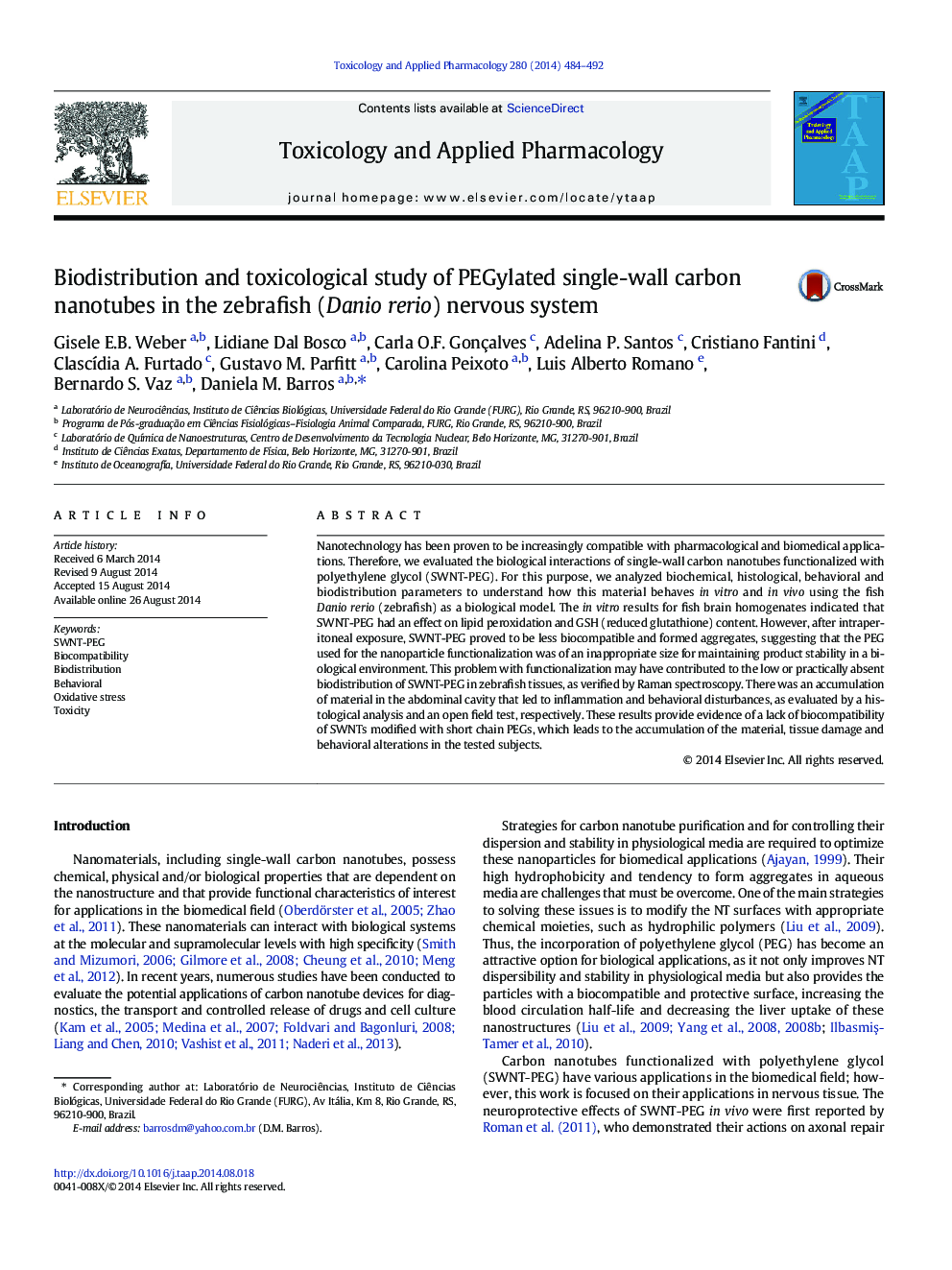| Article ID | Journal | Published Year | Pages | File Type |
|---|---|---|---|---|
| 5846137 | Toxicology and Applied Pharmacology | 2014 | 9 Pages |
â¢In vitro brain exposure diminished lipid peroxidation.â¢In vitro brain exposure depletes the GSH content.â¢SWNT-PEG was not biocompatible and formed aggregates after the exposure.â¢Practically absent biodistribution of SWNT-PEG was observed by Raman spectroscopy.â¢SWNT-PEG exposure lead to tissue damage and inflammatory responses.
Nanotechnology has been proven to be increasingly compatible with pharmacological and biomedical applications. Therefore, we evaluated the biological interactions of single-wall carbon nanotubes functionalized with polyethylene glycol (SWNT-PEG). For this purpose, we analyzed biochemical, histological, behavioral and biodistribution parameters to understand how this material behaves in vitro and in vivo using the fish Danio rerio (zebrafish) as a biological model. The in vitro results for fish brain homogenates indicated that SWNT-PEG had an effect on lipid peroxidation and GSH (reduced glutathione) content. However, after intraperitoneal exposure, SWNT-PEG proved to be less biocompatible and formed aggregates, suggesting that the PEG used for the nanoparticle functionalization was of an inappropriate size for maintaining product stability in a biological environment. This problem with functionalization may have contributed to the low or practically absent biodistribution of SWNT-PEG in zebrafish tissues, as verified by Raman spectroscopy. There was an accumulation of material in the abdominal cavity that led to inflammation and behavioral disturbances, as evaluated by a histological analysis and an open field test, respectively. These results provide evidence of a lack of biocompatibility of SWNTs modified with short chain PEGs, which leads to the accumulation of the material, tissue damage and behavioral alterations in the tested subjects.
